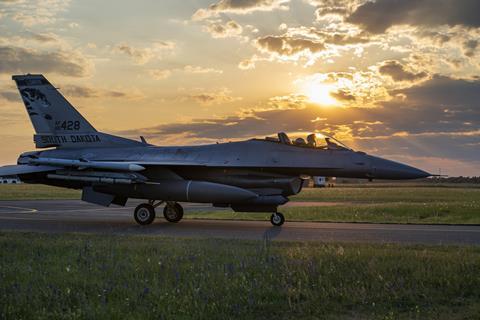The US government’s most recent military aid package to Ukraine includes support for Kyiv’s airpower, but its highest-raking officer insists that fighter aircraft are not pivotal to the counteroffensive against Russia.
The latest USA arms package includes “precision aerial munitions”, as well as Phoenix Ghost and Switchblade loitering munitions, according to an announcement from the administration of US president Joe Biden.

The announcement does not indicate the specific types of aerial munitions, nor the number of loitering munitions. Air-launched weapons that the USA is understood to have previously provided include AGM-88 High-Speed Anti-Radiation Missiles, laser-guided rockets, decoys, and unguided rockets.
Also included in the latest package are electronic warfare systems to counter Russian unmanned air vehicles, in addition to other equipment.
As with previous USA arms packages there is no mention of fighters, although next month Denmark and the Netherlands will start training Ukrainian personnel on the Lockheed Martin F-16.
The USA, notably, has been cool on the idea of sending F-16s to Ukraine, stating that conditions are not right for the American type to make an immediate impact.
Speaking at an 18 July press conference, General Mark Milley, the Chairman of the Joint Chiefs of Staff, offered the US military’s perspective on the question of F-16s amid the counteroffensive.
Launched in early June, the counteroffensive sees Ukraine’s army – newly equipped with Western equipment – attempting to dislodge Russian invaders from heavily-fortified positions. Obstacles include tank traps, trenches, minefields, as well as Russia’s army and air force.
Milley indicates that if a small number of F-16s in Ukrainian service would have a negligible impact. He says there are two ways to control airspace, either from the air or from the ground, and that Ukraine’s ground-based systems can deal with the threat from Russian attack aircraft and helicopters.
“The casualties that the Ukrainians are suffering on this offensive are not so much from Russian airpower; they’re from minefields, minefields that are covered with direct fire from anti-tank hunter-killer teams, that sort of thing,” says Milley.
“So the problem to solve is minefields, not the air piece right this minute.”
He adds that it will take years for Ukraine’s air force to match Russia’s, and that this will require large numbers of aircraft and years of pilot training.
Speaking with Milley at the same press conference, however, US Secretary of Defense Lloyd Austin commended the European F-16 training effort and indicated that F-16s could well be part of Ukraine’s longer-term force structure.
He says Denmark and the Netherlands “continue to make progress on a cohesive training plan and to help some very eager Ukrainian pilots learn to fly fourth-generation aircraft…such initiatives clearly show that members of this Contact Group continue to meet Ukraine’s long-term needs.”


























